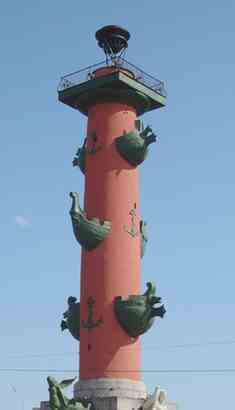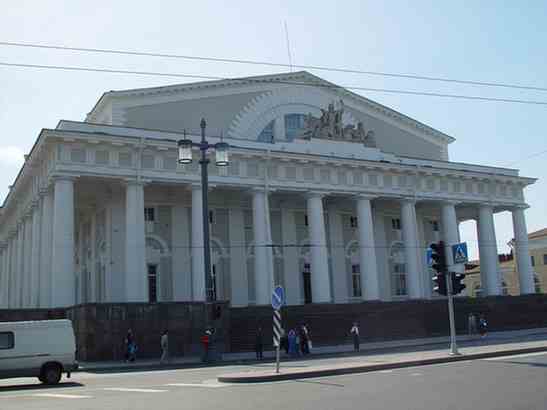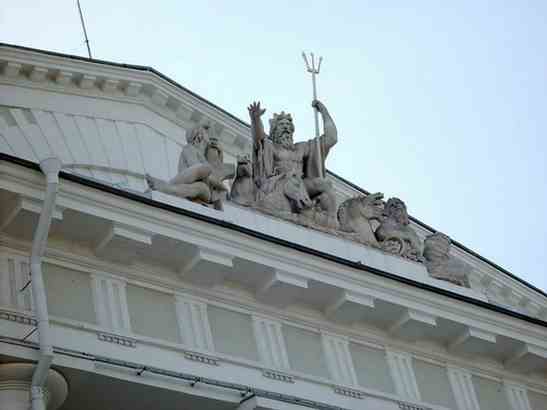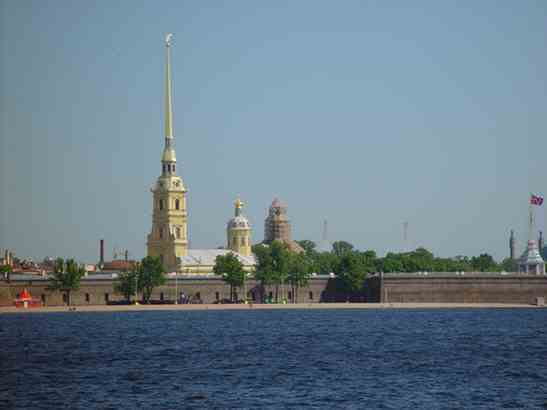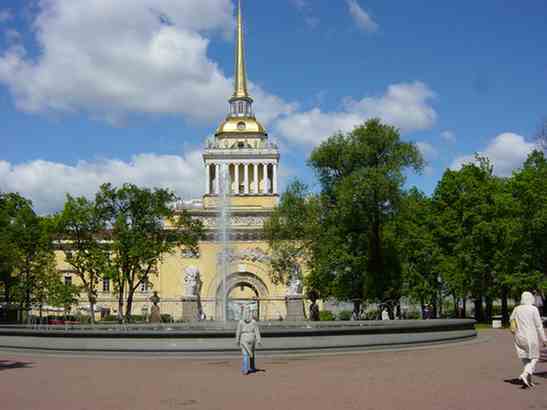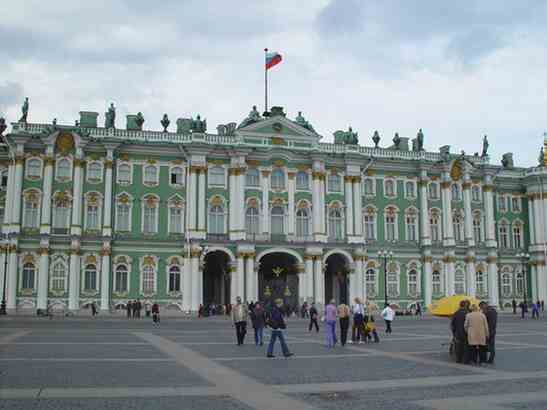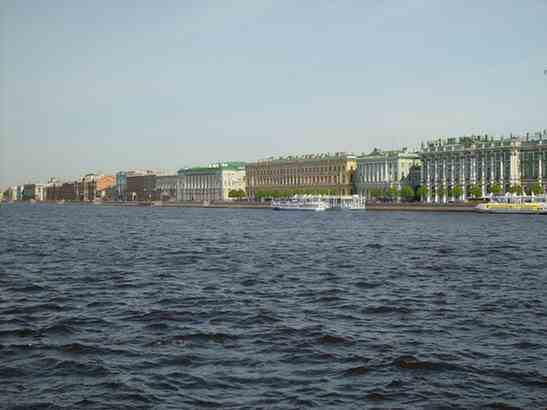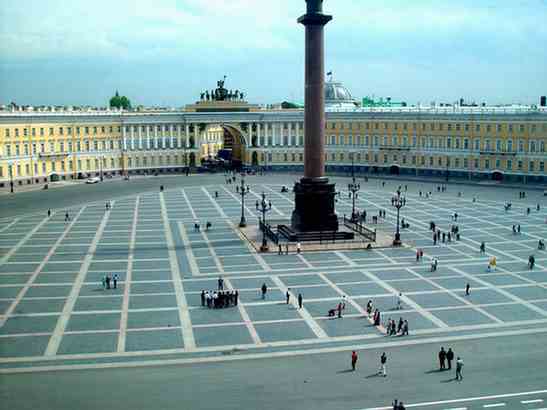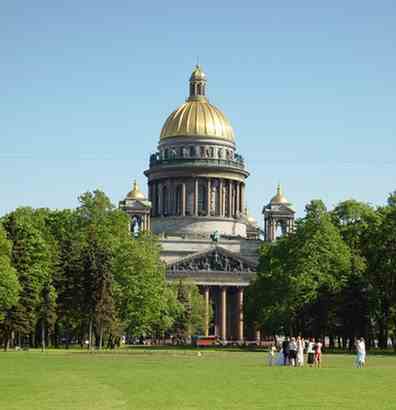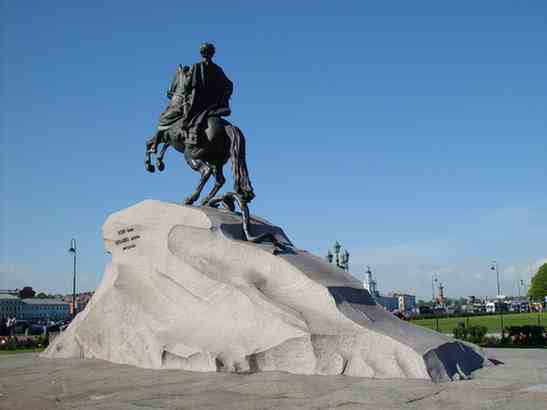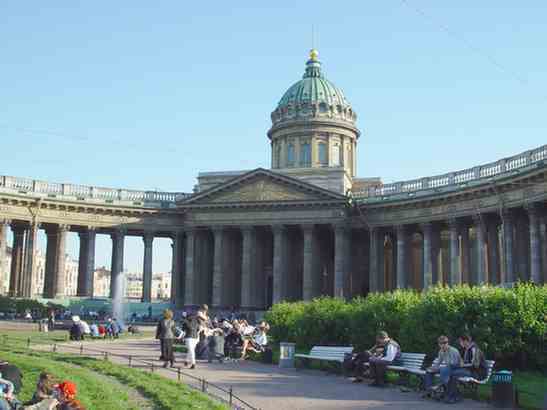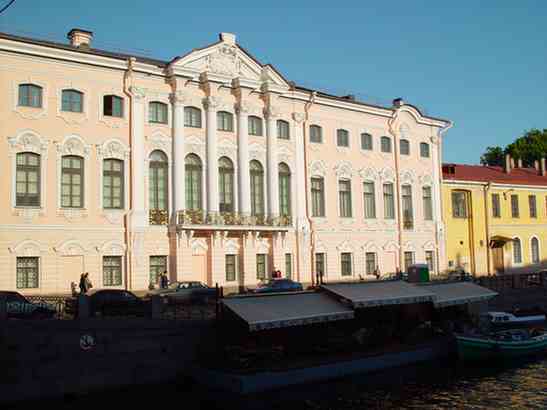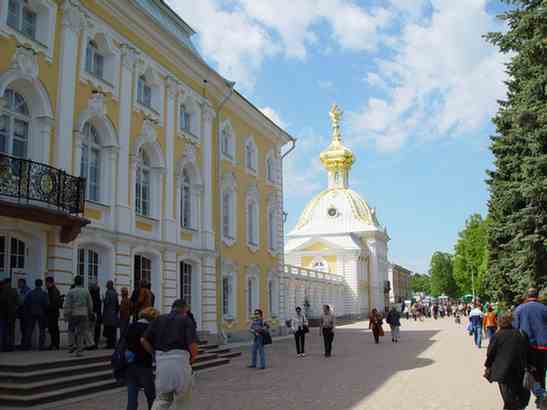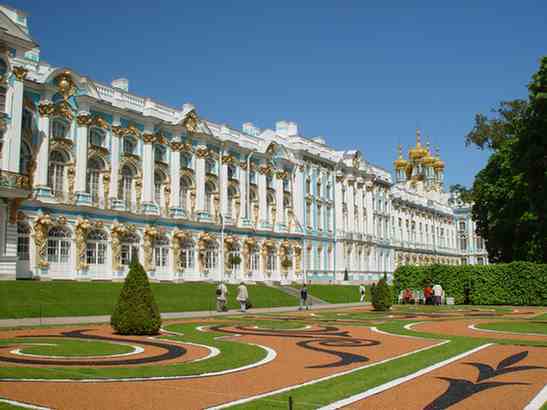|
|
St. Petersburg The Rostral Columns Dating from 1810, these lighthouses were lit with oil lamps during the 19th century. They have been replaced with gas lamps that are still lit on ceremonial occasions. |
|
|
Following a Roman custom, the columns are decorated with protruding ships' prows in celebration of naval victories |
|
|
Built in 1810 and modelled on one of the Greek temples at Paestum in Italy, this former Stock Exchange is now a Naval Museum. |
|
|
Above the façade is an allegorical sculpture featuring the god Neptune in a chariot drawn by sea horses.
This is a reminder that maritime commerce was traditionally the lifeblood of this sea-oriented city. |
|
|
Peter and Paul Fortress Peter the Great founded the city here in 1703. He, and most of the other tsars after him, including the last tsar (the executed NicholasII) are buried in sarcophagi in the Saints Peter and Paul Cathedral. |
|
|
The Admiralty
Built in 1806 it was once part of the shipyard.
It is now occupied by the Naval Engineering School. |
|
|
The Kunstkammer
It was built in 1734 to house Peter's bizarre anatomical collection of curiosities. |
|
|
Next to the Kunstkammer is The Academy of Sciences. |
|
|
The Hermitage
The Hermitage has more than 3 million objects. The recently expanded Louve in Paris is the only larger museum in the world. This is The Winter Palace. |
|
|
The Hermitage consists of The Winter Palace, The Small Hermitage, The Large Hermitage and The Theatre along The Embankment and The New Hermitage at the back of The Large Hermitage. |
|
|
Palace Square It was once the setting for colourful military parades often led by the tsar on horseback. In 1905 it was the scene of the massacre of Bloody Sunday, when gathered troops fired on thousands of unarmed demonstrators. |
|
|
The Alexander Column is hewn out of a single 600 tonne block of granite. It honors the Russian victory over Napoleon in 1812 during the reign of Alexander1. It is the largest free-standing monument in the world. |
|
|
On the southern side of the square is the 1829 General Staff Building with its 2 graceful curved wings.
The arch is crowned by a sculpture of Victory in her chariot. |
|
|
St. Isaacs Cathedral, one of the world's largest cathedrals was opened in 1858. |
|
|
This statue is known as The Bronze Horseman after Pushkin's famous poem. Unveiled in 1782 it was a tribute to Peter from Catherine the Great. The 1,625 tonne pedestal was hewn from a single block of granite hauled from the Gulf of Finland. |
|
|
The Cathedral of Our Lady of Kazan (1811)
It was inspired by St. Peters in Rome and is named after the the miracle-working icon of Our Lady of Kazan. |
|
|
Sheremetev Palace The palace was built by Field Marshall Boris Sheremetev in the 1750s. His descendants were fabulously wealthy and were among Russia's leading artistic patrons and contributed much to the musical life of the city. |
|
|
The Horseguards' Manège (1807).
It was the indoor riding school of the Life Guards' Mounted Regiment. |
|
|
Magnificent Peterhof, the summer palace of Peter the Great. The stunning fountains of the Grand Cascade. It is far more impressive than Versailles near Paris and is on the edge of The Gulf of Finland. We say that is one of the must sees in the world. |
|
|
The main palace at Peterhof. It was almost razed to the ground by the Germans during World War II. The extensive gardens were in full bloom. Lots and lots of tulips. |
|
|
The Church of Spilt Blood, also known as the Resurrection Church of Our Saviour, was built on the spot where in 1881 Tsar Alexander II was assassinated.
The interior has beautiful mosaics. |
|
|
Catherine Palace outside St. Petersburg was designed in 1752 for Tsarina Elizabeth (Peter the Great's Grandaughter) and named in honour of her mother, Catherine.
It has beautiful grounds and interiors. |
